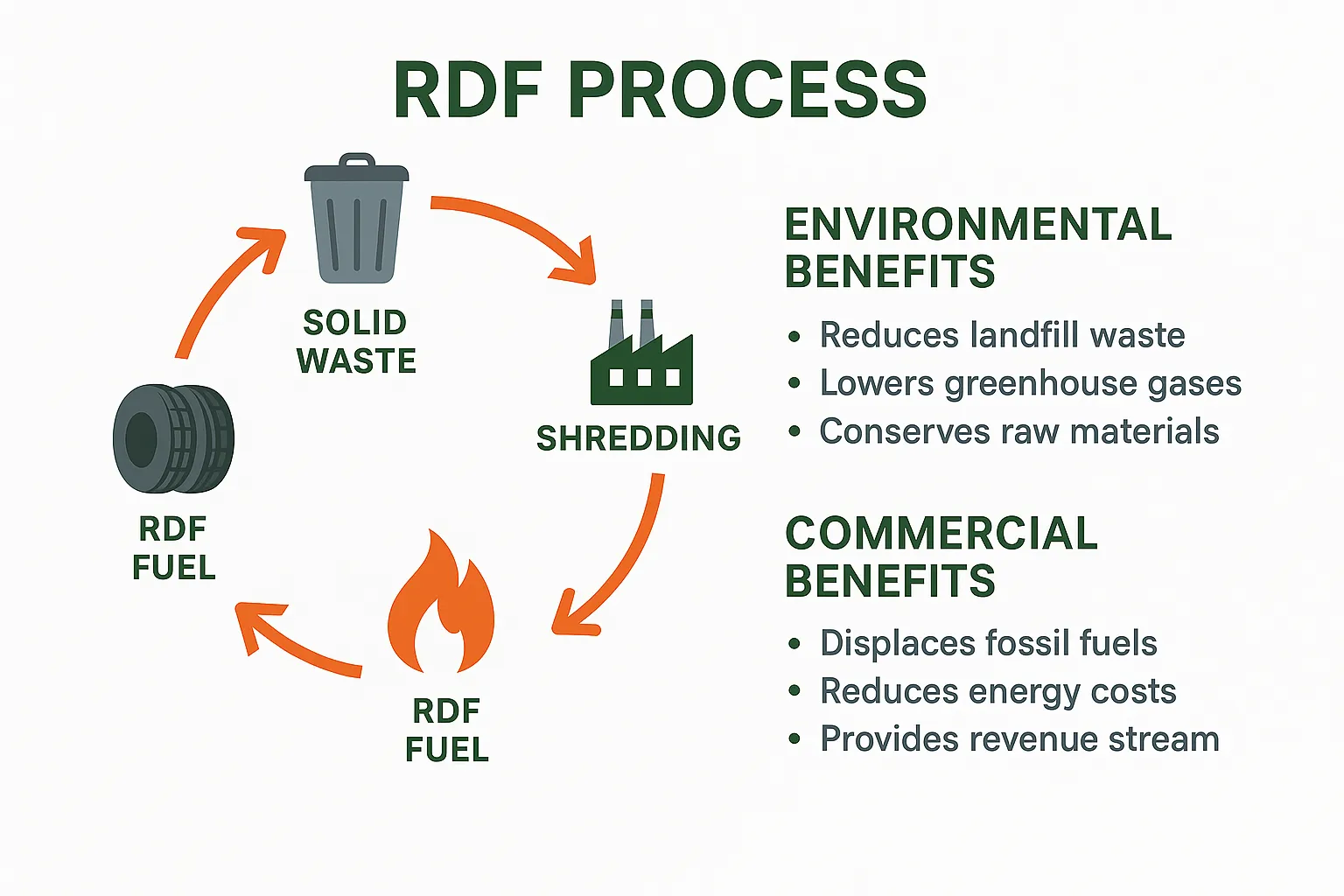Refuse-Derived Fuel (RDF)
Refuse Derived Fuel is produced by the mechanical processing of solid waste. It involves steps like shredding, screening, and classification to produce a fuel suitable for use in incinerators or kilns.
RDF has a lower sulphur content than coal, making it more environmentally friendly and easier to meet air quality standards. It also provides a secondary use for waste, reducing landfill volumes.

Key RDF Export & Usage Facts:
- Typical processing for RDF includes shredding, screening, and air classification of solid waste.
- Compared to coal, RDF has:
- Lower calorific value
- Lower sulphur content (helps meet air pollution regulations)
- Higher chlorine content
- Low sulphur is preferred in kilns to avoid sulphur dioxide emissions and contamination of products like lime.
- RDF ash is:
- Similar to coal ash in silica (SiO₂) and alumina (Al₂O₃)
- Lower in sulphur (SO₃) and iron oxide (Fe₂O₃)
- Higher in alkaline oxides (Na₂O, K₂O)
- RDF is non-hazardous waste (different from municipal solid waste, MSW).
- European Waste List code: 19 12 10 (Fuel-like combustible waste)
- HS Code for export: 3825100000
- Usage restriction: RDF can only be imported and used by R1 recovery status incinerators.
Commercial Benefits:
- Displaces fossil fuels
- Reduces energy costs
- Creates revenue streams through recovery


